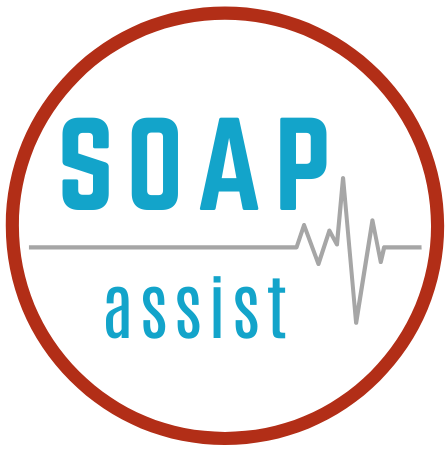What makes a good template
Templates are meant to accomplish the tasks that are performed over and over. If you find yourself saying “I always tell patients…”, then there is probably an opportunity for a template. Obviously, there is nuance to every patient encounter. However, building templates that accommodate these nuances maximize their efficiency. Let’s take a look at how to build a template to accommodate the nuances of medicine.
Glass half full approach
The majority of questions and exam findings are negative. That is, providers ask a litany of questions to elucidate a problem. Most of these are answered in the negative. Additionally, most exam findings are negative. We recommend building templates that are worded in the negative. This convention means providers only have to change the items that were found to be positive. Editing becomes minimal. This convention also reduces error. Providers can assume that everything in the template is negative unless they change it.
Gender-neutral language
How many times does a patient’s sex or gender need to be documented in a note? Once. Understanding this, templates can be structured such that sex and gender are noted at the beginning of the template. The remainder of the note consists of gender-neutral language making it more broadly applicable. This allows for a wide variety of things to be said about a patient without requiring much editing. If a sentence applies to a patient encounter, leave it in. If a sentence does not apply, delete it. Don’t spend time editing unnecessarily.
Allowing for customization
Every patient is different. Strategically leaving space for customization within templates results in improved efficiency. Patients often volunteer important information that is not asked by the provider. There is also a significant amount of information that the provider must elicit from the patient that is not volunteered. SOAPassist curated templates have clearly denoted sections for custom documentation of information volunteered by the patient. Conversely, providers can plan what they intend to ask ahead of time for a given complaint. Many of these questions are in the SOAPassist curated templates but can be modified according to the individual provider’s practice patterns.
Combining templates
One of the biggest drawbacks of using a template is that it rigidly addresses one issue or one very specific set of issues. The SOAPassist SOAP note generator solves this problem. It allows providers to combine any of their templates easily and instantly. The result is a custom online medical SOAP note that is organized and easy to utilize.
Remembering your audience
In the context of a busy day in the clinic or hospital, it can be difficult to produce medical SOAP notes that contain all of the relevant data and nothing more. SOAPassist curated templates are designed to include only the information that is the most relevant for communication with other providers and billing. All of the important information is included, irrelevant information is left out. Creating templates in this way allows for precision documentation.
The convention is the mother of efficiency
The convention is a shared understanding that allows us to communicate and interact. For that reason, it is everywhere. It is in the language we speak and the roads on which we drive. It is also in the way we document medical SOAP notes. We structure notes in similar ways to allow other providers to easily find the information for which they look. SOAPassist curated templates are developed to conform to existing documentation conventions. Yet, they have their own convention. Each section of each template is structured in the same way. The formatting is the same. The location of certain types of information, such as risk and severity scores, can be found in predictable locations. Differential diagnoses are structured the same way. These conventions allow for easy review of the medical SOAP note and a more professional final product.

